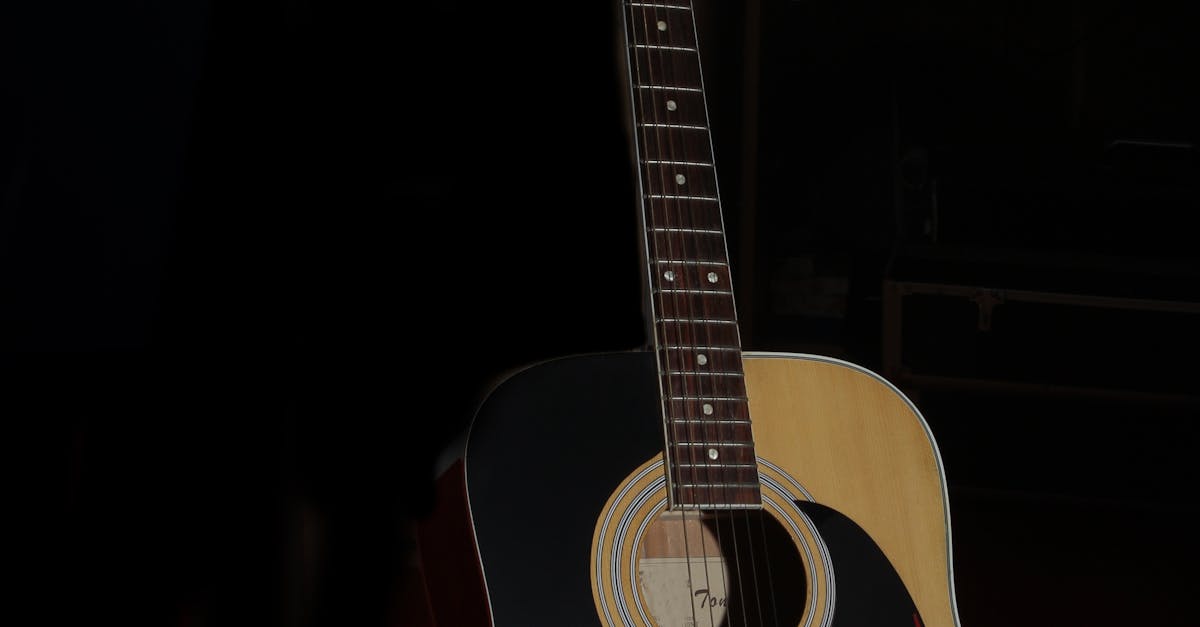Are you ready to learn how to play guitar? Whether you’re picking up a guitar for the first time or looking to expand your skills, we’ve got you covered. In this blog post, we’ll cover everything from basic guitar lessons to more advanced techniques like solo playing. We’ll explore different styles of music and provide tips for improving your guitar playing abilities. So grab your guitar and get ready to rock!
Main Points
- Learning guitar techniques and chords
- Exploring different styles of guitar playing
- Improving solo playing skills
- Tips for enhancing your overall guitar playing abilities
Mastering the Basic Chords
When it comes to learning how to play the guitar, mastering the basic chords is essential for any beginner. With the help of guitar lessons and online tutorials, you can easily learn the fundamental chords that will set a strong foundation for your guitar journey. Some of the most important chords to learn include:
1. C Major Chord:
This chord is often the first one beginners learn, and it is used in countless songs.
2. G Major Chord:
Another important basic chord, the G Major chord is used in a wide variety of music genres.
3. D Major Chord:
This chord is commonly used in folk and rock music, and it’s an essential one to master.
By focusing on these beginner guitar chords, you can start playing many popular songs and build a strong foundation for more advanced techniques in the future. So, don’t underestimate the importance of mastering the basic chords when learning to play the guitar!
Improving Finger Dexterity
Are you looking to enhance your finger dexterity for playing the guitar? Developing strong and nimble fingers is crucial for mastering acoustic guitar techniques, electric guitar basics, and understanding how to play guitar chords. To improve your finger dexterity, it’s important to practice regularly and incorporate exercises that target finger strength and flexibility. Some effective exercises include finger tapping, finger stretching, and finger independence drills. By consistently practicing these exercises, you’ll notice a significant improvement in your finger dexterity and overall guitar playing abilities.
Effective Finger Dexterity Exercises
| Exercise | Description |
|---|---|
| Finger Tapping | This exercise involves rapidly tapping your fingers on a hard surface to improve speed and control. |
| Finger Stretching | Gently stretch each finger individually and hold for a few seconds to enhance flexibility. |
| Finger Independence Drills | Practice playing different patterns with each finger to improve coordination and independence. |
Understanding Music Theory for Guitarists
Hey there, fellow guitar enthusiasts! If you’re looking to take your guitar playing to the next level, then understanding music theory is key. With a solid grasp of music theory, you’ll be able to unlock a whole new world of possibilities on the guitar. From understanding chord progressions to creating your own melodies, music theory is the foundation that every guitarist should build upon.
Guitar Playing Tips
One of the most important key aspects of playing the guitar is to understand the relationship between notes, chords, and scales. By learning the fundamentals of music theory, you’ll be able to navigate the fretboard with ease and confidence.
Exploring Different Playing Styles
When it comes to playing sports, there are various playing styles that athletes can adopt based on their strengths and preferences. Adaptability, creativity, and teamwork are the most important factors to consider when exploring different playing styles. Some players excel in aggressive, attacking gameplay, while others thrive in a more defensive and strategic approach. Additionally, there are players who rely on their speed and agility, while others focus on precision and accuracy.
Below is a table summarizing different playing styles:
| Playing Style | Key Attributes |
|---|---|
| Aggressive | Speed, power, and quick decision-making |
| Defensive | Tactical awareness, discipline, and composure |
| Technical | Precision, accuracy, and ball control |
| Strategic | Vision, game reading, and teamwork |
It’s important for athletes to recognize their individual strengths and weaknesses and to work on improving their skills to become well-rounded players. Ultimately, exploring different playing styles allows athletes to expand their horizons and become more versatile on the field.
Effective Practice Techniques
Introduction
When it comes to improving your skills in any area, practice is key. But not all practice is created equal. To truly make progress, it’s important to employ effective practice techniques that maximize your time and effort.
Focus and Repetition
One of the most important aspects of effective practice is focus. By zeroing in on specific skills or areas for improvement, you can make the most of your practice time. Additionally, repetition is crucial for reinforcing new skills and solidifying your mastery of them.
Feedback and Adjustment
Receiving feedback from a mentor or coach can be incredibly valuable in refining your technique. Use this feedback to make necessary adjustments and improvements in your practice routine.
In conclusion, effective practice techniques involve focused, repetitive practice with an emphasis on feedback and adjustment. By incorporating these techniques into your routine, you can maximize your progress and reach your goals more efficiently.
Unlocking the Secrets of Guitar Soloing
Have you ever wondered how your favorite guitarists effortlessly produce mesmerizing solos that seem to defy all logic and reason? Well, you’re not alone. Guitar soloing has been a mystery to many aspiring musicians for decades. But fear not, because we are here to unlock the secrets behind this enigmatic art form.
The Three Keys to Successful Soloing
When it comes to guitar soloing, three words should always be at the forefront of your mind: technique, emotion, and creativity. These three elements form the foundation of any successful solo, and mastering them is essential for unlocking your full potential as a guitarist.
“Soloing is not just about playing fast or showing off. It’s about expressing yourself and connecting with the audience on a deeper level.” – Legendary guitarist, Jimi Hendrix
Exploring Different Techniques
From bending and vibrato to tapping and legato, there are countless techniques that can take your soloing to the next level. Experimenting with these techniques and finding your own unique style is crucial for standing out as a guitarist.
The Role of Emotion and Creativity
While technique is important, soloing is ultimately a form of artistic expression. Injecting emotion and creativity into your solos is what sets great guitarists apart from the rest. Don’t be afraid to let your feelings and imagination guide your fingers as you play.
| Technique | Emotion | Creativity |
|---|---|---|
| Mastering various guitar techniques | Infusing your solos with raw emotion | Pushing the boundaries and thinking outside the box |
By focusing on these key elements and continuously honing your skills, you’ll soon find yourself unlocking the secrets of guitar soloing and leaving audiences in awe with your breathtaking performances.
Frequently Asked Questions
How do I hold a guitar properly?
You should sit up straight with the guitar resting on your right leg (if you are right-handed) or left leg (if you are left-handed). Keep the guitar close to your body and use a guitar strap if needed.
What are the basic chords for beginners?
Common basic chords for beginners include C major, G major, D major, A major, E major, and their minor variations. Learning these chords will help you play many popular songs.
How often should I practice playing guitar?
Consistent practice is key. Ideally, practice for at least 30 minutes to an hour every day to see steady improvement.
Do I need to learn music theory to play guitar?
While it can be helpful, especially for understanding advanced concepts, you can still learn to play many songs without extensive knowledge of music theory. Focus on learning chords, strumming patterns, and songs you enjoy.
How do I tune a guitar?
You can use an electronic tuner, a tuning app, or tune the guitar by ear using a reference pitch. Standard tuning for a 6-string guitar is EADGBE, from the lowest-pitched string to the highest.


